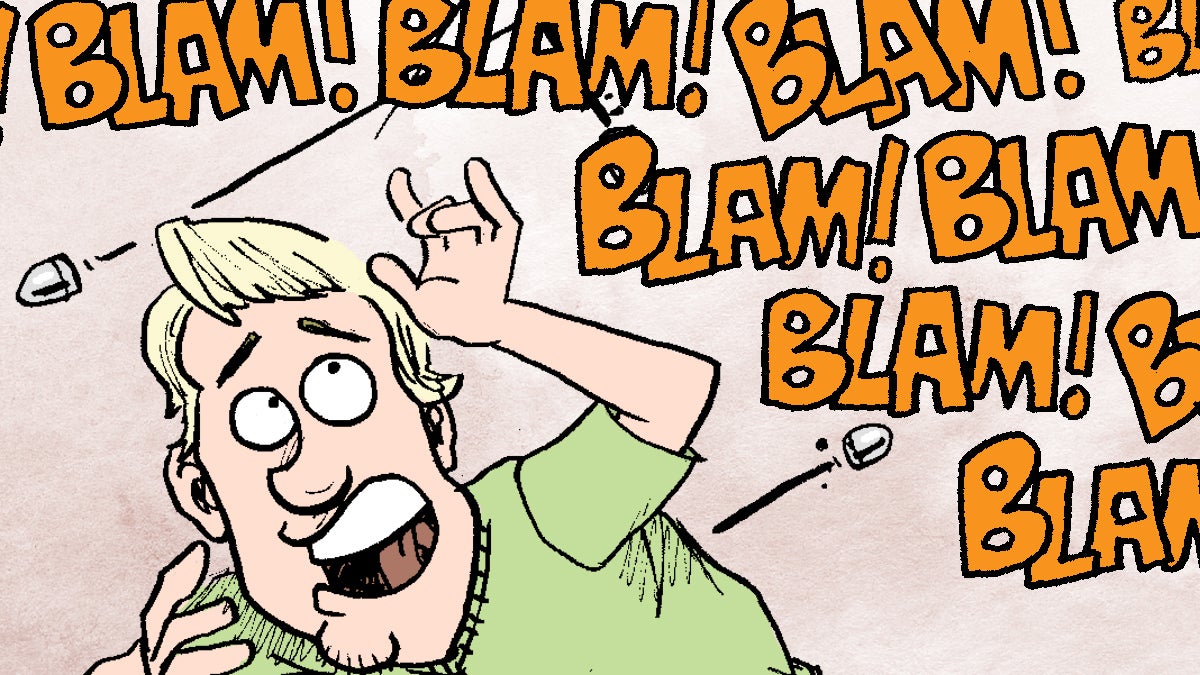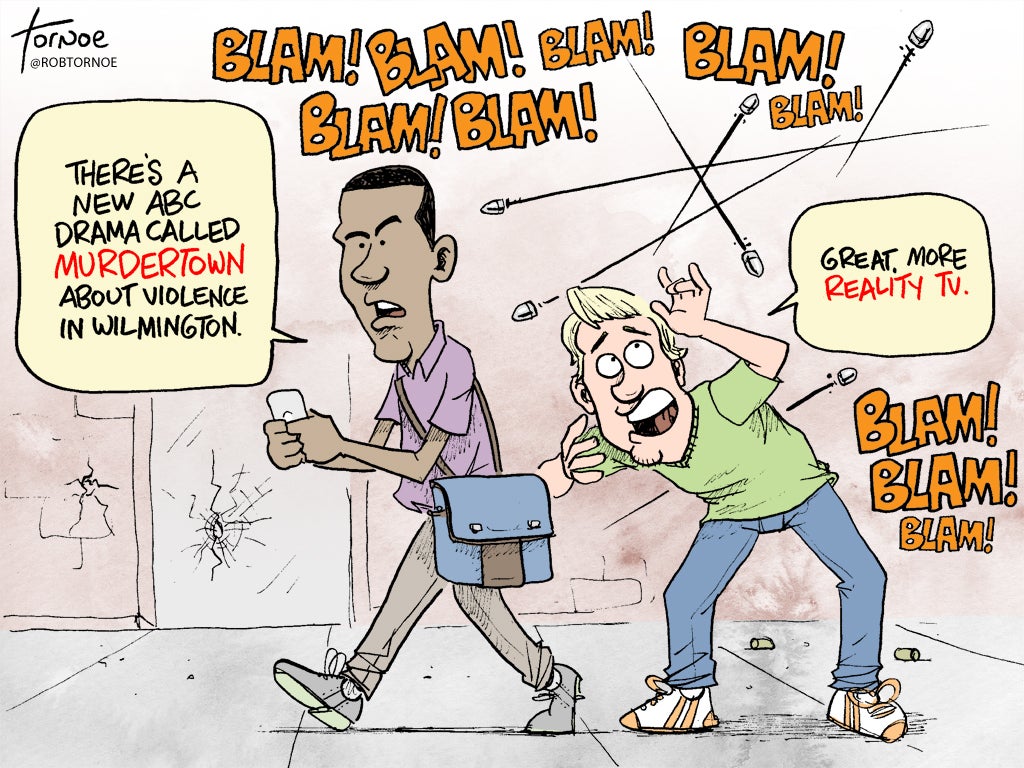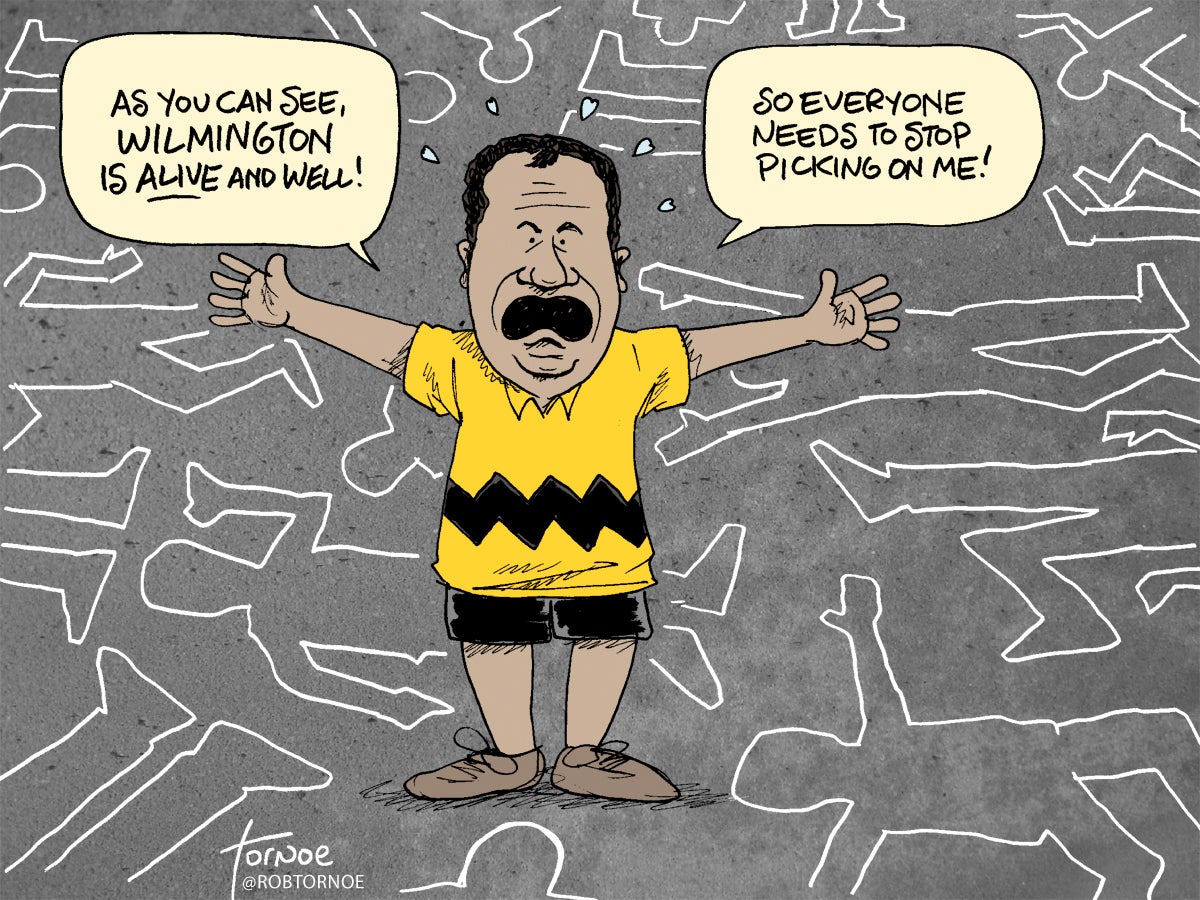Let’s not freak out about ‘Murder Town’ yet

Back in December of 2014, Newsweek magazine dubbed Wilmington “Murder Town USA” in a scathing article about what has sadly become one of the most dangerous small cities in America.

Back in December of 2014, Newsweek magazine dubbed Wilmington “Murder Town USA” in a scathing article about what has sadly become one of the most dangerous small cities in America.
Now, that unfortunate moniker runs the risk of becoming a permanent emblem following the news that Jada Pinkett Smith is set to star in and produce a new ABC legal drama based in Wilmington titled, “Murder Town.”
Before we all go crazy about the title, let’s keep in mind this show (if it even makes it past the pilot phase) is going to have little to do with the real Wilmington. There’s no indication that it’s going to be filmed here, and so far the plot seems more interested in the issues of Baltimore (first female African-American district attorney, racial strife) than Wilmington. Plus, it’s going to be a legal procedural, so think more “The Practice” and less “The Wire.”
Still, despite all the moaning and groaning from the same set of stakeholders trying to paint the city as a mislabeled PR victim, by all accounts Wilmington remains a dangerous city.
According to the FBI, Wilmington ranked third in violence among 450 cities of comparable size. It also rose to sixth among all cities with a population over 50,000. By comparison, Baltimore (a city that inspired two crime dramas, “Homicide” and “The Wire”) ranked 12th.
On top of that, Wilmington’s rate of violence is 1,625 per 100,000 residents – more than quadruple the national average. And as of the beginning of November, Wilmington is on pace to reach all-time highs in shootings and homicides in 2015.
Sure, there have been some positive moments, but they’ve been fleeting. As the News Journal pointed out in a blistering editorial in Tuesday’s newspaper, Operation Disrupt put more cops on the street, at least until the program ran out of money. Eight people were shot in the first five days after patrols stopped.
And so far, Mayor Dennis Williams, a former cop, hasn’t been able to deliver on his naive promise to put a major dent in street crime in his first 6-7 months in office. “You won’t even think it’s the same city,” he declared. Apparently, ABC disagrees with him.
Even more troubling is Williams’ apparent willingness to contribute to the exploitation of the victims of violence and crime in the city, telling the News Journal he has no problem with the show, as long as Hollywood comes here to spend their money.
“I’ll take their money. I just hope they get somebody good looking to play me,” a tone-deaf Williams said, forgetting that it was under his watch the city earned its “Murder Town” label.
No one should be surprised with Williams’ inability to advance public safety, considering earlier this year he appeared on WDEL to complain about the evil, rotten News Journal picking on him, leading me to draw this cartoon of Wilmington’s clueless leader:

So we as citizens have two choices: we can complain that people are misjudging or exploiting Wilmington, or we can try to work together to offer ideas that might illuminate paths to reducing the violence.
Obviously, education and economic growth are long-term issues that could help stem the tide of violence, but there are also some short-term ideas that might be worth exploring.
In Richmond, California, citizens desperate for a way to decrease one of the country’s worst homicide rates initiated an unusual solution – it paid its most violent offenders to stay out of trouble.
The initiative identified young men between 13 and 25 who were most at risk of killing (or being killed) and paid them a monthly stipend for connecting with mentors and sticking with programs that encouraged positive behavior, like GED programs and job training.
The results have been astounding. According to the Washington Post, the city’s murder rate has declined 77 percent, down to just 11 homicides in 2014. And only three of those were gang-related.
In Chicago, a city-funded program called CeaseFire sent former gang members into targeted neighborhoods to help reduce tension before things erupted into violence. By their own count, the team was able to reduce the amount of shootings by 75 percent, and killings by nearly 29 percent.
Unfortunately, a budget meltdown in Illinois forced the city to cut funding for the CeaseFire program, which resulted in a 20 percent increase in shooting and homicides through October.
In fact, the need to target at-risk youth more effectively and provide them with real opportunities to change the course of their lives was one of the recommendations made by the Centers for Disease Control and Prevention as part of their study of urban gun violence in Wilmington.
But for these ideas to work, everyone, from politicians to law enforcement officials, social services workers and members of the community, will have to buy-in to new ideas and work together. That’s been historically tough in a city where stakeholders seem to value their turf as much as the gangs they’re trying to eradicate.
I guess it just depends if now really is the time everyone agrees enough is enough.
Have an idea? Share it on social media with the hashtag #FixWilmington.
Rob Tornoe is a cartoonist and WHYY contributor. Follow Rob on Twitter @RobTornoe.
WHYY is your source for fact-based, in-depth journalism and information. As a nonprofit organization, we rely on financial support from readers like you. Please give today.


